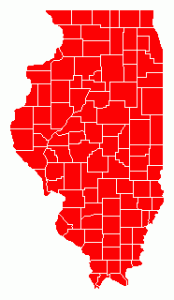 As the Casey Anthony trial/cultural moment/media feeding frenzy reached its denouement last week, two of the biggest trials of 2006 collided in the Seventh Circuit. Five years ago, Illinois Gov. George Ryan and Enron President Jeffrey Skilling were both convicted of mail fraud. From there, the two cases took quite different paths. Ryan’s conviction was affirmed by the Seventh Circuit, and the Supreme Court denied certiorari, but Skilling managed to win a partial reversal in the Supreme Court a year ago, as the Court substantially narrowed the reach of the mail-fraud statute. Ryan immediately sought another review of his conviction through a 28 U.S.C. § 2255 motion, arguing that the jury in his case was improperly instructed in light of Skilling. The district court denied relief, and the Seventh Circuit affirmed the decision last Wednesday. Ryan v. United States (No. 10-3964).
As the Casey Anthony trial/cultural moment/media feeding frenzy reached its denouement last week, two of the biggest trials of 2006 collided in the Seventh Circuit. Five years ago, Illinois Gov. George Ryan and Enron President Jeffrey Skilling were both convicted of mail fraud. From there, the two cases took quite different paths. Ryan’s conviction was affirmed by the Seventh Circuit, and the Supreme Court denied certiorari, but Skilling managed to win a partial reversal in the Supreme Court a year ago, as the Court substantially narrowed the reach of the mail-fraud statute. Ryan immediately sought another review of his conviction through a 28 U.S.C. § 2255 motion, arguing that the jury in his case was improperly instructed in light of Skilling. The district court denied relief, and the Seventh Circuit affirmed the decision last Wednesday. Ryan v. United States (No. 10-3964).
The court did not stake out any new ground legally in Ryan, but the opinion does provide a helpful roadmap of some of the opportunities and pitfalls that face defendants who try to take advantage of a new, narrowing construction of a criminal statute after their direct appeals have been exhausted.
Forfeiture is one of the major pitfalls. Defendants will not normally anticipate potentially favorable rulings in other cases in the future, which means that arguments based on those rulings will not be made and preserved at trial. Such forfeiture usually prevents the arguments from being made later in a collateral challenge. ”With respect to arguments that were not made at trial, the appropriate standard on collateral review for evaluating the content of jury instructions is ’cause and prejudice.’” (4)
Ryan argued that the “cause” prong was satisfied in his case because the arguments he might have made regarding jury instructions were foreclosed by pre-Skilling Seventh Circuit precedent. No dice. ”‘[C]ause’ in the formula ’cause and prejudice’ means some impediment to making an argument. That the argument seems likely to fail is not ’cause’ for its omission.” (6)
Having failed to satisfy the cause and prejudice test, one possibility remained for Ryan: “[F]orfeiture is not conclusive when a person is innocent.” (7) Thus, the court observed, “If Skilling establishes that Ryan is innocent of mail fraud, then he is entitled to relief notwithstanding his lawyers’ failure to anticipate its holding.” (8)
But what exactly was Ryan required to prove in order to show his innocence? ”The right question . . . is whether, applying current legal standards [i.e., post-Skilling law] to the trial record, Ryan is entitled to a judgment of acquittal. If yes, then the mail fraud convictions must be vacated; if no, then they stand.” (9)
As instructed, Ryan’s jury could have convicted him based on the receipt of any secret financial benefit. Today, however, Skilling requires an actual bribery or kickback scheme. Did the evidence at trial show bribery? The Seventh Circuit had little difficulty answering the question in the affirmative:
The record shows compellingly — indeed, Ryan admits — that he received substantial payments from private parties during his years as Secretary of State and Governor. . . . [T]here is no doubt that a properly instructed jury could have deemed the payments bribes or kickbacks; the inference that they were verges on the inescapable. The district court’s opinion canvasses the evidence and demonstrates why a reasonable jury could find that Ryan sold his offices to the high bidders. (10-11)
Cross posted at Life Sentences Blog.
